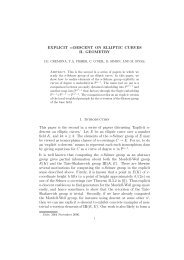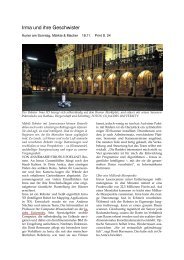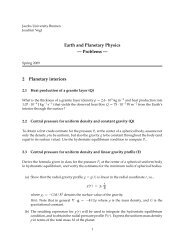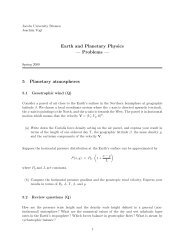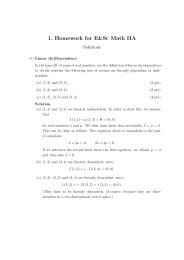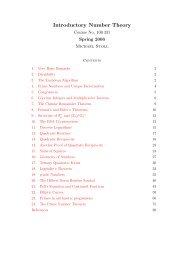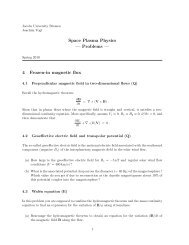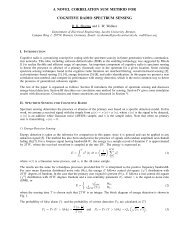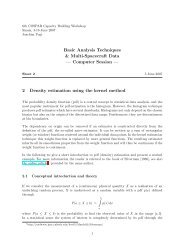Linear Algebra II (pdf, 500 kB)
Linear Algebra II (pdf, 500 kB)
Linear Algebra II (pdf, 500 kB)
Create successful ePaper yourself
Turn your PDF publications into a flip-book with our unique Google optimized e-Paper software.
18<br />
Finally, if V is finite-dimensional, then by Cor. 6.5, we have dim V ∗∗ = dim V ∗ =<br />
dim V , so αV must be surjective as well (use dim im(αV ) = dim V −dim ker(αV ) =<br />
dim V ∗∗ .) <br />
6.9. Corollary. Let V be a finite-dimensional vector space, and let v ∗ 1, . . . , v ∗ n be<br />
a basis of V ∗ . Then there is a unique basis v1, . . . , vn of V such that v ∗ i (vj) = δij.<br />
Proof. By Prop. 6.3, there is a unique dual basis v∗∗ 1 , . . . , v∗∗ n of V ∗∗ . Since αV is<br />
an isomorphism, there are unique v1, . . . , vn in V such that αV (vj) = v∗∗ j . They<br />
form a basis of V , and<br />
v ∗ i (vj) = αV (vj)(v ∗ i ) = v ∗∗<br />
j (v ∗ i ) = δij .<br />
6.10. Example. Let V be the vector space of polynomials of degree less than n;<br />
then dim V = n. For any α ∈ F , the evaluation map<br />
evα : V ∋ p ↦→ p(α) ∈ F<br />
is a linear form on V . Now pick α1, . . . , αn ∈ F distinct. Then evα1, . . . , evαn ∈ V ∗<br />
are linearly independent, hence form a basis. (This comes from the fact that the<br />
Vandermonde matrix (α j<br />
i )1≤i≤n,0≤j≤n−1 has determinant <br />
i



